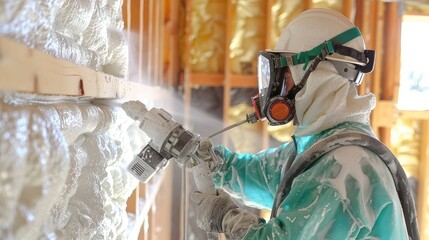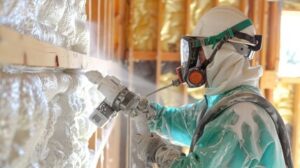Junk Removal Frederick MD is essential for maintaining clean and organized spaces. Over time, clutter can accumulate and create stress and inconvenience. Removing unwanted items helps restore order and improves functionality. Professional junk removal services simplify the process and ensure efficient handling.
Effective junk removal starts with identifying and sorting items. Separating recyclable, reusable, and disposable materials ensures proper disposal. This process minimizes environmental impact and promotes sustainability. Careful sorting helps preserve valuable resources.
Recycling plays a significant role in junk removal. Many materials like metal, glass, and plastic can be repurposed or recycled. Professional teams ensure that recyclable items are directed to the appropriate facilities. This reduces landfill waste and supports environmental conservation.
Donating usable items is a valuable part of the removal process. Furniture, clothing, and household goods in good condition can benefit others. Professional services often coordinate with donation centers to give items a second life. This approach reduces waste and helps the community.
Handling hazardous materials requires special care. Chemicals, batteries, and electronic waste need to be disposed of according to environmental regulations. Improper disposal can cause contamination and health risks. Professional teams are trained to handle hazardous materials safely.
Estate cleanouts can be emotionally and physically challenging. Families may need to clear out years of accumulated belongings. Professional junk removal teams handle estate cleanouts with sensitivity and efficiency. This allows families to focus on personal matters while ensuring proper handling of items.
Office cleanouts help improve productivity and organization. Old furniture, electronics, and paperwork can create clutter and reduce efficiency. Professional teams clear out unwanted items without disrupting business operations. Clean and organized workspaces boost employee morale and performance.
Construction debris removal is essential for site safety and efficiency. Leftover materials, damaged equipment, and waste need to be cleared promptly. Professional teams handle construction waste quickly and safely. Clean job sites improve workflow and reduce safety hazards.
Hoarding situations require a compassionate and organized approach. Excessive accumulation of items can create unsafe living conditions. Professional junk removal teams work respectfully to clear out hoarded spaces. This helps restore safety and comfort for those affected.
Garage cleanouts are a common part of junk removal. Garages often become storage spaces for unused or forgotten items. Professional teams sort through the clutter and remove unwanted items efficiently. Reclaiming garage space allows for better organization and increased functionality.
Electronic waste removal requires proper handling due to environmental concerns. Old computers, televisions, and appliances contain harmful materials. Professional teams ensure that e-waste is recycled or disposed of according to environmental guidelines. Proper handling prevents environmental contamination.
Furniture removal can be challenging due to size and weight. Large sofas, beds, and tables are difficult to move through tight spaces. Professional teams use proper equipment and techniques to remove furniture safely. This reduces the risk of injury and property damage.
Yard waste removal helps improve outdoor spaces. Leaves, branches, and other debris can accumulate and create an untidy appearance. Professional teams clear out yard waste quickly and efficiently. Clean outdoor areas enhance curb appeal and usability.
Appliance removal requires careful handling and disposal. Old refrigerators, washing machines, and stoves are heavy and difficult to transport. Professional teams use proper lifting techniques and equipment for safe removal. Responsible disposal ensures that harmful materials are handled correctly.
Handling oversized items requires strategic planning. Large items like pianos, exercise equipment, and safes require specialized handling. Professional teams assess the best way to remove these items without causing damage. Careful planning ensures safe and efficient removal.
Rental property cleanouts need to be handled quickly and efficiently. When tenants leave behind unwanted items, landlords need to prepare the space for new occupants. Professional teams clear out rental properties promptly. Fast cleanouts reduce downtime and improve rental income.
Handling confidential materials requires secure disposal methods. Old files, documents, and electronic data need to be destroyed properly. Professional teams use shredding and data destruction methods to protect sensitive information. Secure disposal prevents identity theft and data breaches.
Attic and basement cleanouts improve home organization. These spaces often accumulate clutter over time. Professional teams sort through stored items and remove what is no longer needed. Clean and organized storage spaces enhance home functionality.
Storm damage cleanup often involves removing fallen branches, damaged furniture, and debris. Professional teams respond quickly to clear out storm-related waste. Fast cleanup helps restore normalcy and prevents further damage. Professional handling ensures safe and thorough removal.
Scrap metal removal helps recover valuable materials. Old pipes, wires, and appliances can be recycled or repurposed. Professional teams sort and transport scrap metal to recycling facilities. Proper handling supports environmental sustainability and reduces waste.
Handling sentimental items during junk removal requires sensitivity and respect. Family heirlooms, photographs, and personal memorabilia need careful handling. Professional teams work with clients to identify and preserve important items. Thoughtful service ensures that valuable memories are retained.
Community cleanups involve clearing out public spaces to improve safety and aesthetics. Professional teams work with local organizations to organize cleanups. Removing litter and debris enhances community pride and engagement. Clean public areas promote healthier and safer environments.
Handling mattresses and bedding requires proper disposal methods. Old mattresses can harbor pests and allergens if not disposed of correctly. Professional teams ensure that mattresses are recycled or discarded according to regulations. Proper handling improves hygiene and environmental safety.
Renovation waste removal helps keep construction projects on track. Old fixtures, materials, and debris need to be cleared promptly. Professional teams handle renovation waste efficiently. Clean job sites improve project flow and safety.
Handling old paint, chemicals, and cleaning products requires proper disposal. These materials can be harmful to the environment if not handled correctly. Professional teams follow environmental guidelines for hazardous waste disposal. Safe handling protects the environment and public health.
Oversized appliance removal requires specialized handling. Large refrigerators, ovens, and air conditioning units are difficult to transport. Professional teams use proper equipment and lifting techniques. Safe removal prevents injury and property damage.
Handling personal items during cleanouts requires careful attention. Clothing, jewelry, and documents need to be sorted and handled thoughtfully. Professional teams work with clients to identify and keep valuable items. Thoughtful handling ensures that important belongings are preserved.
Storage unit cleanouts help clients reclaim valuable space. Unused storage units often accumulate clutter over time. Professional teams help clients sort through stored items and remove unwanted ones. Organized storage improves accessibility and reduces costs.
Seasonal cleanouts help manage clutter and improve organization. Spring and fall are popular times for clearing out unused items. Professional teams handle seasonal cleanouts quickly and efficiently. Regular maintenance prevents clutter from accumulating.
Handling antiques and collectibles requires knowledge and care. Valuable items need to be assessed and handled properly. Professional teams understand how to manage delicate and valuable pieces. Proper handling preserves their value and condition.
Post-event cleanups help restore order quickly. After large gatherings, leftover waste and debris need to be cleared out. Professional teams handle post-event cleanups efficiently. Fast service ensures that spaces are ready for future use.
Handling mixed materials during junk removal requires proper sorting. Wood, metal, plastic, and fabric need to be processed according to recycling and disposal guidelines. Professional teams are trained to separate and handle mixed materials properly. Efficient sorting reduces landfill waste.
Old flooring and carpet removal improve indoor spaces. Worn-out flooring and carpeting need to be removed and replaced. Professional teams handle removal and disposal efficiently. Clean floors improve comfort and appearance.
Handling construction tools and materials requires proper disposal. Broken or outdated tools and materials need to be cleared out of workspaces. Professional teams ensure that these items are recycled or discarded properly. Proper handling reduces clutter and improves workspace efficiency.
Junk removal provides both practical and emotional benefits. Removing clutter creates more functional and comfortable spaces. Professional services reduce the physical and emotional burden of cleanouts. Efficient junk removal improves overall quality of life.






